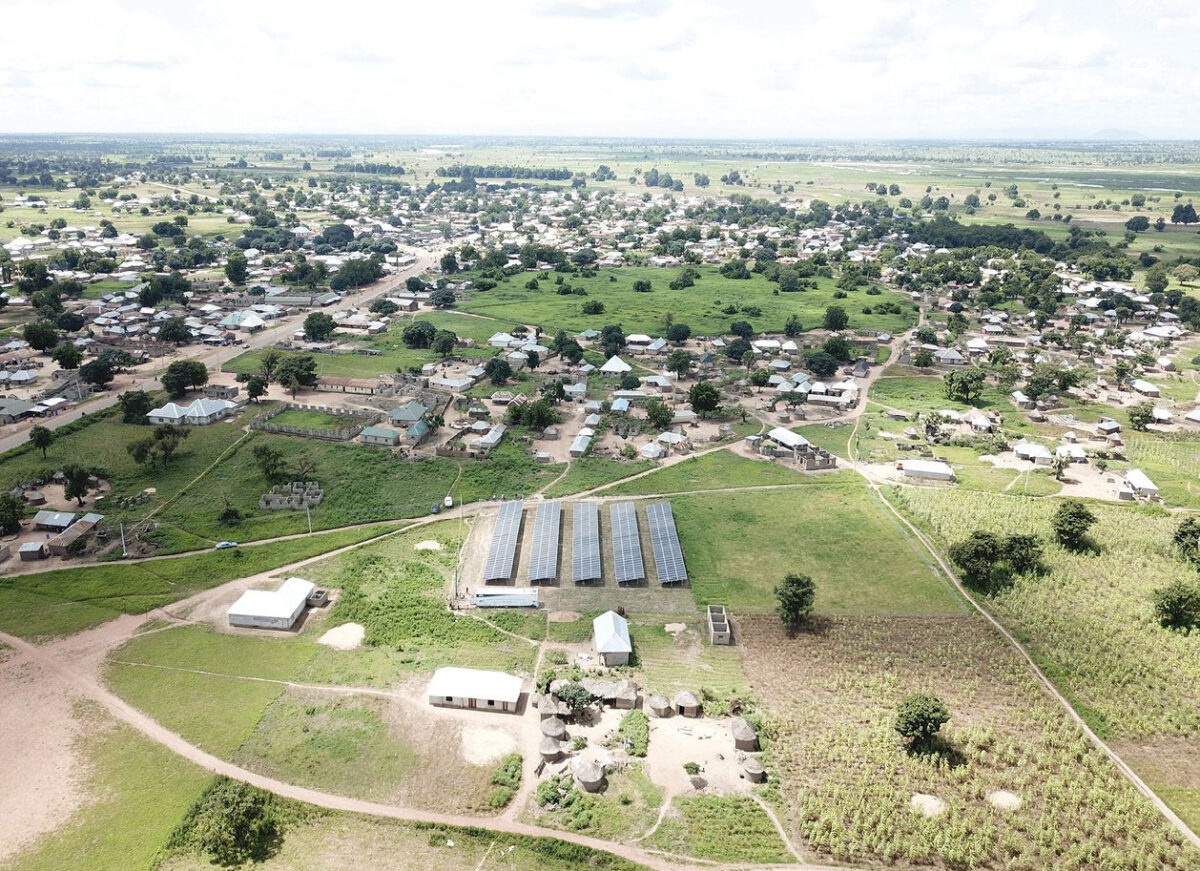Nigeria mainly uses fossil fuels and hydro in its 4 GW power generation fleet. It has been estimated around 30 GW of capacity would be needed to fully cover its population of 200 million people.
The International Renewable Energy Agency (IRENA) estimated Nigeria had 33 MW of grid-connected solar at the end of 2021. With solar irradiance ranging from 1.5 MWh/m² to 2.2 MWh/m² why does the country remain shackled by energy poverty? IRENA has estimated renewables could meet 60% of Nigeria’s energy demand by 2050.
Thermal power stations generate around 70% of Nigeria’s electricity today, with hydro providing most of the remainder. Five main generation companies (GenCos) dominate and the Transmission Company of Nigeria is the sole transmission entity, responsible for the development, maintenance, and expansion of the transmission network.
The distribution sector has been completely privatized. Power produced by the GenCos is sold to Nigerian Bulk Electricity Trading Company (NBET) which is the only bulk trader of electricity. It buys electricity from the GenCos through power purchase agreements (PPAs) and sells to private distributors through vesting contracts. This structure ensures that the generating companies get a guaranteed price irrespective of what happens on the distribution side. There are fundamental problems with the system which also affect the adoption of solar technology as a part of Nigeria’s energy mix.
Bankability concerns
The first discussions about grid-connected renewable energy technology in Nigeria happened around 2005, when the “vision 30:30:30” initiative was introduced. The aim of this program was to achieve an increase of up to 32 GW in generating capacity by 2030; 9 GW from renewable sources, including 5 GW of solar.
More than a decade later, 14 solar independent power producers (IPPs) finally signed PPAs with NBET. The government thereafter introduced feed-in tariffs (FITs) to make solar more attractive to investors. Interestingly, none of those original IPP projects reached financial close, due to policy uncertainty and lack of grid infrastructure.
A key issue was a government U-turn on a previously agreed tariff, offering a lower FIT, citing a drop in the cost of solar as the reason. Only two out of the 14 IPPs accepted the reduction in FIT payments with the rest stating the revised figure was too low to be viable.
NBET also requires a partial risk guarantee, an agreement between itself as the off-taker and a finance body. Essentially, this is a guarantee to give NBET more liquidity in case it needs cash, and the guarantee has to be paid back by the government to the finance entity. The IPPs will not be able to reach financial close without this guarantee. So far, though, it has not been forthcoming, partly because some finance institutions have now rescinded their offer to provide guarantees due to a lack of trust in the electricity market.
Ultimately, the lack of lender trust in the Nigerian power market also stems from fundamental issues with the electricity grid, especially with regards to its reliability and flexibility. That is why most lenders and developers require guarantees to safeguard their investments. Much of Nigeria’s grid infrastructure is unreliable.
Favorable government policies for solar and other renewables are fundamental to the success of clean energy development. One strategy which could be considered is unbundling the offtaker market by allowing businesses to buy electricity directly from IPPs. This takes away the need for price regulation, to a large extent, and enables those who do not mind paying a premium for stability and flexibility to do so. This in turn takes away the need for most of the complicated guarantees that lenders require to finance projects, and positively improves liquidity.
In addition, upgrading grid infrastructure and increasing transmission capacity is key, so that more solar can be connected to the grid and energy security can be increased. There is also a role here for multilateral development banks (MDBs). The reason why thermal power plants have been successfully developed and remain in use is because of the risk guarantees provided by MDBs for them. If these can be extended to the emerging solar market in Nigeria, it will increase the adoption of PV.
Potential
Nigeria is a potentially big market for solar mini-grids as there are towns and communities without any connection to the grid.
Mini grids are also an opportunity for developers and financiers to serve those without access to electricity, and for the development of captive solar power facilities for heavy energy consumers, such as mines, to ensure their own reliable and affordable power capacity. There is also opportunity for development of energy storage solutions to stabilize local grids.
Tapping Nigeria’s PV potential will require a synchronous effort between the government, developers, lenders, and consumers. And time is of the essence now that many countries are in the race to net zero. Decarbonizing power infrastructure is key.
 About the author: Abdul Sotayo is a due diligence consultant with Everoze and has a master’s degree in energy engineering. He has mostly worked on ground-mounted solar and storage projects in West Africa, including end-to-end management, overseeing cross functional project teams, and commissioning. Sotayo has broad technical experience in solar and battery installation as well as construction monitoring. He also has experience in data analysis, with a focus on operations and maintenance.
About the author: Abdul Sotayo is a due diligence consultant with Everoze and has a master’s degree in energy engineering. He has mostly worked on ground-mounted solar and storage projects in West Africa, including end-to-end management, overseeing cross functional project teams, and commissioning. Sotayo has broad technical experience in solar and battery installation as well as construction monitoring. He also has experience in data analysis, with a focus on operations and maintenance.
The views and opinions expressed in this article are the author’s own, and do not necessarily reflect those held by pv magazine.
This content is protected by copyright and may not be reused. If you want to cooperate with us and would like to reuse some of our content, please contact: editors@pv-magazine.com.



1 comment
By submitting this form you agree to pv magazine using your data for the purposes of publishing your comment.
Your personal data will only be disclosed or otherwise transmitted to third parties for the purposes of spam filtering or if this is necessary for technical maintenance of the website. Any other transfer to third parties will not take place unless this is justified on the basis of applicable data protection regulations or if pv magazine is legally obliged to do so.
You may revoke this consent at any time with effect for the future, in which case your personal data will be deleted immediately. Otherwise, your data will be deleted if pv magazine has processed your request or the purpose of data storage is fulfilled.
Further information on data privacy can be found in our Data Protection Policy.